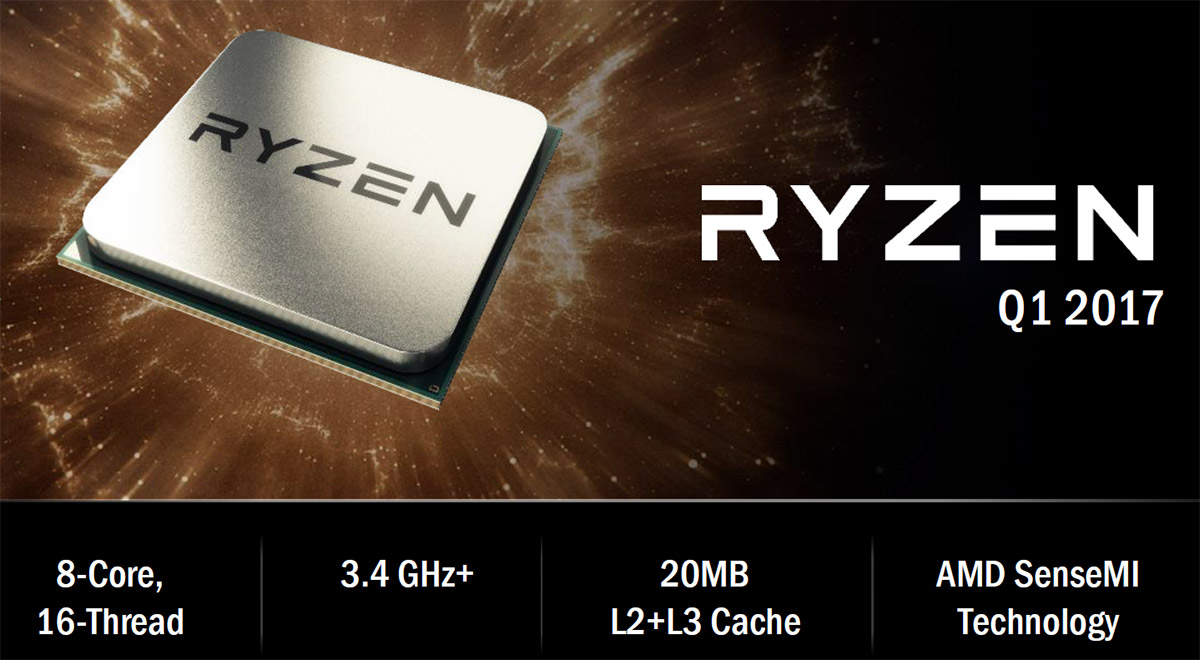For years, we’ve been getting laptops that simply aren’t as powerful as desktops but we’ve got two new surprises this year. Maybe we’ll talk about the other one later, but the one we want to talk about here is the Vega. NVidia beat AMD to this punch, but not quite like AMD may do this year. The GTX 10 series have been out for some time and have only very recently incorporated themselves into laptops of which we can thank the VR industry for. AMD is not only planning to release their Vega on desktops but also on laptops later on in the same year. Unlike NVidia, AMD strives for the consumer gamer and knew they needed a powerful graphics card that could compete with NVidia at a lower price point. This was why their 8-core Ryzen was only $500 and why consumers expect Vega to follow the same pricing pattern. However, AMD doesn’t provide a direct graphics card like NVidia and, instead, goes with the APU design.

The APU
The APU design is mind boggling and difficult to understand, even as a developer. Truth be told, unless the overall system has been designed to take advantage of it, it doesn’t boost the speed of information by very much. However, if I am bringing up Vega as a topic but APU’s aren’t powerful unless specifically designed for it, why am I bringing it up? The APU is both a CPU and a GPU without the bottleneck experience that comes from having them as separated units. The APU was designed once someone at AMD noticed just how much information is handled by the GPU in comparison to the CPU.
CPU multi-thread performance really only comes into play when you are talking about linear programs that have tasks that need to happen concurrently. Most games are built to be a single linear task with the only need for CPU being in the A.I. and file load departments, but mainly the A.I. Most games are single-core or duo-core processor based games. I mean, think about the innards of a game really. The behind-the-scenes code hasn’t changed very much beyond graphics and targets. Let’s look at game environments. The GPU handles geometry, which means all the visual assets in the game a run by the GPU. The CPU handles A.I. and Physics, but GPU handles coordinate calculations so moving characters are handled by the GPU still with some extra information by the CPU. Unless you’re dealing with a game like Watchdogs or GTA V, you normally don’t have a lot of A.I. assets to load in and continuously monitor. This is why you see that you need a minimum of a Quad-core in most cases, but almost always need a last year graphics card for the most part.
APU’s can handle putting on the Quad-core because AMD normally builds Octo-cores on a single processor, which means putting four cores on a single processor is a breeze. Now it has room to put a ton of GPU cores, a total of eight on their newest APU model. That model has an R7 Radeon card with a total of 512 shader cores. That’s not really impressive at all, but if you remember, the R7 series is a much older model than the R9 and RX series we currently deal with. That is why the potential APU mix of a Vega with a Ryzen is a massive deal that a few people are picking up on.
Why have APUs kinda sucked?
Honestly, it’s because of RAM that these APU’s haven’t made a more pronounced name for themselves. That is why AMD created the HBM, which handles memory three times better than our previous DDR5 memory. The APU’s have been working with DDR3 and DDR4 respectively this entire time. Therefore, not only has the GPU on APU’s been from way in the past, but it has also had to endure against much slower memory speeds as well. This combines into a mixture of slowness that means you simply can’t handle the best of the best.
How will Vega be different?
That’s where the combination of Vega and Ryzen is mindblowing. The APU for Vega uses HBM, which means not only will this APU have one of the fastest GPUs on the market but it will also utilize one of the fastest RAM methods currently available. This type of APU could easily blow all APUs of the past into virtual nonexistence.
The Laptop VR World Forever Changed
We’ve seen what Ryzen has to offer and it happens to be one of the most powerful graphics cards on the market, holding its own against Intel’s 6900k at half the price. Intel and NVidia have both been in for a good laugh these past couple of years with Intel focusing on more core power and NVidia focusing on just increasing the overall power. Both of these companies have been doing so with no regards to pricing whatsoever. I mean, just look at the new commercially available Intel processor Intel Core i7-6950X for $1,775 or look at the new commercially available NVidia card for $799. That’s almost three grand on two parts without counting the price of anything else. Meanwhile, the Ryzen top processor (1800) comes close to beating the i7-6950X and it has just released with barely any updates to the infrastructure at nearly a third of the price. The i7 series can make no such claim as it has been available for quite some time now.
For a very long time, Snapdragon has reigned supreme when it comes to the processor for the mobile market. However, an APU processor usually beats out a Snapdragon quite easily when you compare the release date versions. In the past, the APU has needed way too much power to allow for a phone to effectively use it and the architecture is usually an x86 for an APU. It’s not likely that AMD will invest into the smartphone market, but any phone that can use this type of APU will be the best on the market immediately in terms of processing and graphical power: just don’t repeat the Nokia mistake AMD.

In all this hype, it may look like I’m going off topic, but I’m not and here’s why. The desktop market obviously has its kings right now and AMD is doing its best to climb up a hill they left behind for a few years. The laptop market is still a market AMD is not good at and APU laptops are not really advertised over Intel. Finally, smartphones usually aren’t compatible with APUs. This could all change with Vega and Ryzen, but it all depends on the price point. You see, if you combined the cost of the newest Vega with the newest Quad-core Ryzen, you wouldn’t get anywhere because Vega hasn’t released, but speculatively the price would be about the same as their newest graphics card in the RX series, which is in the $200-$300 range.
Now, if you combine those prices, you come out to around $500 collectively because their Ryzen 5 1500X will be $200. Look at the best Alienware quad core laptop and see what CPU/GPU it offers and at what price: GTX 1070 at $500 and i7-7820HK at an undisclosed price, but considering it adds another $100 to it when you add it to the configuration, I would assume the processor would be around $200-$300 and that’s being nice to Intel. That means you need nearly $800 for that combination alone to get the best available on a laptop. Now, this is where it gets good, we compare that price to the newest A10 APU processor of $150 because the APU shouldn’t theoretically be as powerful as the two standalones not combined. That’s right, we’re looking at an APU processor with AMD’s most powerful technologies inside of it for underneath $300. That takes off nearly $500 from the price of a current laptop. Even if you didn’t use the price point of the APU, you still save nearly $300 with that combination. This combo as the potential to completely change the price of VR computers in both desktops and laptops.
My Final Thoughts
We’ve gone everywhere in this article and I’m sure you’ve enjoyed it, but we need to come back home so I can express what I think will happen. This year is not the year that AMD beats all of their competitors. This is the year that AMD combines all of their technologies to create an environment that completely shocks the world. Neither Vega nor the Ryzen series have been optimized for the best settings, so to say that it can compete with a high-end Intel Processor and Graphics Card are very impressive. This is new architecture and if you’re thinking about buying them, I would wait until Ryzen has been out for a couple more months and the same is true of Vega. Those optimizations are extremely important and motherboard companies need time to fully utilize these new architectures. Once they do optimize for AMD’s new set of gadgets, I can almost guarantee that AMD will be back in the game and maybe even beating out both companies at the same time.





Comments are closed.